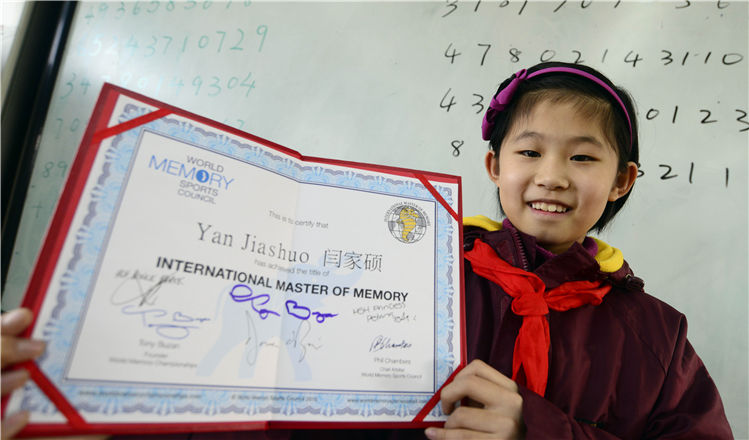Blueprints for greater success in the future
Updated: 2015-12-26 05:12
By WANG YING in Shanghai(China Daily USA)
|
||||||||
 |
|
China's automobile industry will be leveraging technology to boost production and presence in foreign markets, while public transportation is expected to become more efficient. Photo by Gao erqiang / china daily |
Smart and green construction
Many new records were set during the construction of the 632-meter-tall Shanghai Tower and the building is physical proof of what can be achieved with state-of-art technology.
The construction of the Shanghai Tower was a groundbreaking achievement for Chinese companies. After all, it was the first time they had to construct a building taller than 600 meters, and also the first time a single-building project with a weight of 850,000 tons was constructed on soft clay ground, said Hang Yingwei, president of Shanghai Construction Group, the contractor for the Shanghai Tower development.
To build the tower, Shanghai Construction Group spent millions of yuan to research building information modeling (BIM) technology and the Shanghai Tower represents the first application of this technology by Chinese companies, added Hang.
“We stored every detail of the complicated design into an iPad, and more than 3,500 workers can work together at peak construction periods, thanks to the three-dimensional digital technology of BIM,” said Hang.
High technology requires huge input, and Shanghai Construction Group spared no efforts in research and development investment. More than 2.5 billion yuan was spent on technological R&D in 2014, and Hang said that such input has started to pay off.
“A fine building is like a business card for a city, but more importantly, it is a testament to the making of history,” said Hang, who noted that Shanghai Construction Group will be looking to use its intelligent construction and green technology to build more buildings and turn Shanghai into a smart city.
New energy and transportation
As many as 600,000 new energy cars will be produced by Shanghai Automotive Industry Corporation (SAIC) by 2020, among which, about 200,000 will be under its own brands.
The current annual sales revenue of SAIC is around 630 billion yuan, or one-third of the combined revenue of all of Shanghai’s State-owned enterprises.
According to Chen Zhixin, president of SAIC, a breakthrough in core technology has already been made and the company’s own car brands are poised for a new era of development.
Chen added that the increase in building capacity will complement automotive innovation and e-commerce. An online platform for sales and resale, as well as maintenance, was launched in March this year and nearly 3,500 retailers have signed up.
Although SAIC currently produces 5.62 million cars, or 23 percent of the nation’s total, only 2 percent of the company’s cars are sold overseas, whilst merely 4 percent of its products are under its owned brands, according to Chen Yongming, a professor from Shanghai Administration Institute.
“This situation will soon change in the next five to 10 years as the city is working to develop advanced manufacturing industries which in turn will help to boost SAIC’s presence in foreign markets,” said Professor Chen.
Reforms can be expected in the public transportation sector to boost efficiency as well. Shanghai’s underground network is currently the world’s longest, measuring 577 kilometers and comprising 339 stations and 15 lines. As of the first half of 2015, the network handles 8.09 million passenger trips daily.
According to Gu Weihua, president of Shanghai Shentong Metro Group Co Ltd, the waiting time for trains at Shanghai’s major metro line stations will be within two minutes in the next five years, and the total distance covered by the subway network will hit 1,000 kilometers by 2025.
wang_ying@chinadaily.com.cn
- More aid from China set for Syria
- Japanese journalist reportedly being held in Syria
- New York City has warmest Christmas Eve on record
- One dead as fight leads to fatal shooting at North Carolina mall
- Trump's lead bodes well for Hillary Clinton's presidential bid
- Spanish Socialist leader insists no support for Rajoy

 China's top scientific achievements in 2015
China's top scientific achievements in 2015
 Yearend 2015: A picture and its story
Yearend 2015: A picture and its story
 Christmas celebrated across the world
Christmas celebrated across the world
 HK car show kicks off during Christmas season
HK car show kicks off during Christmas season
 10 major economic policies that will make a difference on lives
10 major economic policies that will make a difference on lives
 Santa Claus is busy in China
Santa Claus is busy in China
 Yearend 2015: Heartstopping images captured by daredevils
Yearend 2015: Heartstopping images captured by daredevils
 Girl becomes youngest Master of Memory
Girl becomes youngest Master of Memory
Most Viewed
Editor's Picks

|

|

|

|

|

|
Today's Top News
Shooting rampage at US social services agency leaves 14 dead
Chinese bargain hunters are changing the retail game
Chinese president arrives in Turkey for G20 summit
Islamic State claims responsibility for Paris attacks
Obama, Netanyahu at White House seek to mend US-Israel ties
China, not Canada, is top US trade partner
Tu first Chinese to win Nobel Prize in Medicine
Huntsman says Sino-US relationship needs common goals
US Weekly

|

|








